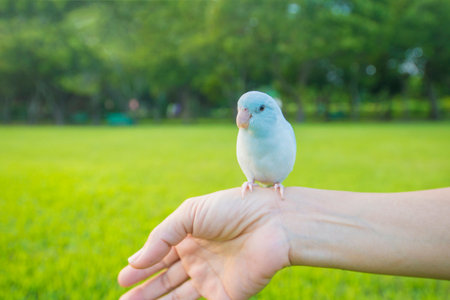Introduction to British Climate and Landscape
Understanding the impact of climate and environment on bird socialisation and training in the UK begins with appreciating the country’s remarkably diverse climate zones and natural landscapes. The British Isles are renowned for their unpredictable weather, ranging from crisp, chilly mornings in Scotland to milder, wetter afternoons in southern England. This ever-changing climate plays a significant role in shaping not only native bird species but also the day-to-day routines of bird enthusiasts and trainers.
The UK is divided into several climatic regions: the cool, often damp Highlands; the temperate lowlands of England; the windswept coastal areas; and the more sheltered valleys and woodlands. Each region presents unique challenges and opportunities for those engaged in bird socialisation. For instance, frequent rainfall in Wales and western Scotland creates lush habitats teeming with insect life—ideal for foraging birds—but can make outdoor training sessions challenging due to muddy terrain or sudden downpours.
Meanwhile, the relatively mild winters and long daylight hours during summer across much of England provide extended opportunities for hands-on interaction and gradual socialisation, particularly important when raising young birds or acclimatising new arrivals. Natural environments such as ancient woodlands, heathlands, moorlands, and urban parks offer varied settings where birds can experience different stimuli—vital for developing well-rounded, confident companions.
In summary, Britain’s patchwork of microclimates and rich biodiversity set a distinctive stage for bird care. Whether you’re guiding a flock through their first social experiences or engaging in specialised training, being mindful of local weather patterns and habitat types is essential for fostering healthy, sociable birds in the UK.
2. Seasonal Variations and Bird Behaviour
The UKs distinct seasonal changes play a pivotal role in shaping the behaviour, socialisation, and training potential of birds. Unlike regions with extreme climates, the UK experiences long, damp winters and relatively mild summers, which create a unique rhythm for both wild and domesticated birds. These seasonal patterns can have a profound impact on how birds interact with their environment and one another.
The Influence of Wet Winters
During the prolonged, often wet winter months, daylight hours are short and temperatures remain cool. This leads many birds to adjust their daily routines. For instance, they may spend more time sheltering and conserving energy, while social activities are typically limited to essential flocking for warmth and foraging. As a result, bird owners might notice reduced activity levels and more subdued social interactions among their feathered companions.
How Winter Affects Socialisation and Training
| Winter Challenge | Impact on Birds | Tips for Owners |
|---|---|---|
| Shorter Days | Less natural light reduces active periods | Schedule training during midday for best results |
| Cold & Damp Conditions | Birds seek shelter, less inclined to explore or interact | Provide indoor enrichment and safe spaces for group interaction |
Mild Summers: Opportunities for Enrichment
In contrast, the UKs gentle summers encourage increased activity as daylight stretches late into the evening. Birds become more sociable, engaging in extended periods of foraging, singing, and playful behaviour. This is an ideal season for introducing new socialisation exercises or group training sessions, as birds are generally more receptive to learning and interacting with both humans and other birds.
Seasonal Adaptation Strategies
- Take advantage of longer daylight in summer to lengthen training sessions.
- Encourage outdoor activities when weather permits to stimulate natural behaviours.
- Adjust feeding schedules to match changing activity levels across seasons.
The cyclical nature of the UKs climate means that bird keepers must remain attuned to these seasonal variations. By understanding and adapting to these shifts, owners can better support their birds physical health, social development, and overall wellbeing throughout the year.

3. Challenges of Training Birds in Damp and Variable Weather
Training birds outdoors in the UK presents a unique set of challenges due to its famously unpredictable climate. The frequent rain, gusty winds, and fluctuating temperatures can significantly influence both the behaviour of birds and the effectiveness of training sessions. These conditions require bird keepers to be flexible and resourceful in their approach.
The Practical Difficulties of Wet Weather
Rain is perhaps one of the most persistent obstacles for anyone working with birds in Britain. Wet feathers are not only uncomfortable for birds but can also impair their ability to fly and reduce their motivation to participate in activities. Slippery perches and soggy ground increase the risk of accidents during recall or flight training. To adapt, many keepers recommend having sheltered areas or portable canopies ready, so training can continue without interruption while still offering some exposure to natural weather conditions for acclimatisation.
Coping with Windy Conditions
Wind presents another layer of complexity, especially when working with smaller species or younger birds. Strong gusts can make flight control difficult, leading to disorientation or even escape. It’s advisable to monitor weather forecasts closely and adjust training times accordingly—early mornings or late afternoons often bring calmer conditions. During windy spells, focusing on ground-based exercises or short flights within enclosed spaces helps maintain consistency without compromising safety.
Managing Temperature Fluctuations
Sudden drops or rises in temperature are common in the UK and can affect a bird’s willingness to engage. Cold snaps may lead to lethargy, while unexpected warmth could result in overheating, particularly for heavier or dark-feathered breeds. Providing shaded resting spots, windbreaks, and access to fresh water during sessions is essential. Gradual acclimatisation by exposing birds to mild changes in temperature helps build resilience over time.
Tips for Adaptation
Successful bird training in the UK’s variable climate relies on observation and preparedness. Always have a backup plan: if outdoor sessions become untenable, transition to indoor socialisation activities that reinforce trust and responsiveness. Invest in weather-resistant equipment and clothing for yourself as well as perching and shelter options for your birds. By embracing the unpredictability of British weather and adapting routines accordingly, you’ll foster both confidence and flexibility in your feathered companions.
4. Urban vs Rural Environments: Socialisation Opportunities
Birds across the UK experience vastly different opportunities for socialisation and training depending on whether they are raised in urban, suburban, or rural environments. The diversity of environmental stimuli and the availability of social interactions can have a profound impact on their behavioural development and adaptability.
Comparing Environmental Stimuli
City parks, suburban gardens, and countryside settings each present unique challenges and benefits for birds. Urban areas, particularly city parks, tend to be bustling with human activity, providing birds with frequent exposure to people, pets, and the sounds of traffic. This constant stimulation often results in birds that are less fearful of humans and more adaptable to change. In contrast, rural environments offer quieter surroundings but a richer tapestry of natural stimuli such as diverse bird species, insects, and native plants. Suburban gardens strike a balance between these two extremes, offering moderate human interaction alongside some natural features.
Table 1: Key Differences in Socialisation Opportunities
| Environment | Social Interactions | Environmental Stimuli | Training Challenges |
|---|---|---|---|
| City Parks (Urban) | Frequent with humans & pets; mix of wild & feral birds | Loud noises, high foot traffic, artificial lighting | Overstimulation, risk of habituation to hazards |
| Suburban Gardens | Regular family contact; some neighbouring wildlife | Moderate noise; garden plants & feeders attract birds/insects | Balancing safety with enrichment opportunities |
| Countryside Settings (Rural) | Mainly with wildlife; less frequent human contact | Diverse flora/fauna; seasonal weather changes | Limited exposure to varied social situations |
The Role of Environment in Training Success
The ease of training is often influenced by these environmental factors. Birds in urban settings may quickly learn to navigate busy public spaces or ignore distractions during recall exercises due to regular exposure. However, this can also lead to habituation where birds become desensitised to potential dangers such as vehicles or predators. Conversely, rural birds might excel at responding to natural cues and adapting to seasonal weather patterns but could struggle when introduced to unfamiliar people or environments.
Caring for Birds Across Different Settings
No matter where you live in the UK, understanding your local environment is key to successful socialisation and training. Tailoring your approach—whether that means increasing enrichment activities in quieter rural areas or managing overstimulation in cities—will help ensure your bird remains confident and well-adjusted. By being attentive to these differences, you can provide the best care possible based on your bird’s everyday experiences.
5. Natural Flora and Fauna: Enrichment and Social Learning
The unique tapestry of Britain’s natural flora and fauna plays a significant role in the enrichment and social development of birds, particularly those undergoing training or living in managed care. The lush hedgerows, ancient woodlands, and diverse meadows provide a wealth of opportunities for foraging and play, allowing birds to engage in behaviours that echo their wild instincts. For instance, native plants such as hawthorn, elderberry, and rowan offer seasonal fruits that not only supplement a bird’s diet but also encourage problem-solving skills and natural foraging techniques.
Moreover, the presence of native insects, small mammals, and even amphibians within these habitats introduces birds to a variety of prey items. This diversity fosters hunting skills in raptors and encourages exploratory behaviour in smaller species. Regular exposure to Britain’s rich biodiversity helps trained birds develop confidence, adaptability, and keen observational skills—all essential traits for both socialisation and successful training outcomes.
Interaction with other wildlife, including songbirds, corvids, and even squirrels or rabbits, further enhances social learning. Birds often observe the behaviours of these animals, picking up cues about food sources or potential dangers. In managed environments such as aviaries or falconry centres, replicating elements of the local ecosystem—by planting native shrubs or introducing logs and leaf litter—can greatly benefit birds’ mental stimulation and social engagement.
Ultimately, integrating Britain’s natural flora and fauna into daily routines not only enriches the lives of birds but also deepens their connection to the environment. Such practices foster healthy social structures among groups of trained birds, promoting cooperative behaviours like flock calling, mutual preening, or even communal roosting. This holistic approach supports both the physical wellbeing and emotional fulfilment of birds under human care.
6. Cultural Attitudes Towards Bird Training and Socialisation
In the UK, the cultural landscape plays a significant role in shaping how birds are socialised and trained, both as pets and within wild populations. The British public has a longstanding affection for wildlife, reflected in widespread participation in aviculture, regular wild bird feeding, and a strong sense of responsibility towards animal welfare. These attitudes deeply influence how birds are integrated into homes and gardens across the country.
Aviculture in British Culture
Aviculture enjoys a unique status in Britain, where keeping companion birds is often approached with gentleness and patience. Owners typically prioritise the welfare and emotional well-being of their birds, adopting positive reinforcement techniques rather than strict discipline. This careful approach encourages trust, making socialisation a gradual process that respects each birds individual temperament and needs.
The Role of Wild Bird Feeding
Feeding wild birds is an integral part of British life, with millions taking part in garden feeding year-round. This activity not only supports local bird populations through harsh weather but also fosters a culture of observation and appreciation. By watching wild birds interact at feeders, people gain insights into natural behaviours, which can inform training methods for pet birds—encouraging natural socialisation styles that mirror those seen in the wild.
Responsible Pet Ownership and Its Influence
The UK places high value on responsible pet ownership, underlined by robust animal welfare laws and guidance from organisations like the RSPCA. This ethos translates into conscientious training routines that emphasise enrichment, social interaction, and the avoidance of stress or fear-based methods. Such practices help birds adapt more readily to domestic life while retaining their innate sociability.
Together, these cultural elements nurture an environment where both captive and wild birds are treated with respect and care. As a result, British approaches to bird socialisation and training often reflect a balance between structured learning and freedom of expression—shaped by national values that cherish wildlife and promote harmonious coexistence.
7. Best Practices for Successful Bird Socialisation and Training in the UK
When it comes to bird socialisation and training in the UK, a thoughtful approach that reflects the unique British climate and community is essential. Birds thrive when their environment is tailored to local conditions, ensuring they remain healthy, sociable, and adaptable throughout the year.
Understanding Local Weather Patterns
The UKs weather can be unpredictable, with frequent rain, fluctuating temperatures, and limited sunlight during winter months. To help birds adjust:
- Provide indoor spaces: Create comfortable indoor aviaries or enclosures with adequate heating for colder periods.
- Access to natural light: Use UV lamps or ensure safe access to daylight to support birds’ mental wellbeing and vitamin D synthesis.
- Sheltered outdoor areas: If offering outdoor time, ensure aviaries are sheltered from wind and rain, with dry perches available at all times.
Encouraging Positive Social Behaviour
Birds are social creatures by nature but may become stressed or withdrawn if their needs aren’t met. In the context of British homes and gardens:
- Gradual introductions: Introduce new birds slowly to prevent territorial disputes, especially in multi-bird households.
- Enrichment activities: Rotate toys and add foraging opportunities using native plants to stimulate natural behaviours.
- Routine social interaction: Make time daily for gentle handling and communication, helping birds bond with their carers.
Catering to British Community Life
In the UK, birds often share their environment not only with humans but also with other pets and neighbourhood wildlife.
- Safe outdoor exposure: Supervise time outdoors and use secure harnesses or enclosed aviaries to prevent escapes or encounters with local predators such as foxes or cats.
- Noise acclimatisation: Gradually expose birds to everyday sounds like lawnmowers or passing traffic so they remain calm in typical British settings.
- Respecting neighbours: Be mindful of noise levels from your birds, especially in terraced houses or flats, fostering good relations within your community.
Nutritional Considerations for the UK Climate
Adapting diets to suit seasonal changes helps maintain robust health. Offer varied seeds, fresh greens (such as kale or dandelion leaves), and locally sourced fruits. During colder months, supplement with high-energy foods like soaked pulses to support warmth and vitality.
Staying Connected with Local Resources
Engage with local avian clubs, reputable breeders, or veterinary practices specialising in exotic species. Sharing experiences and tips specific to the UK can provide valuable support on your bird-keeping journey.
By following these best practices—attuned to both climate and community—you’ll nurture well-adjusted birds that bring joy to your household while thriving within the distinctive rhythms of British life.


